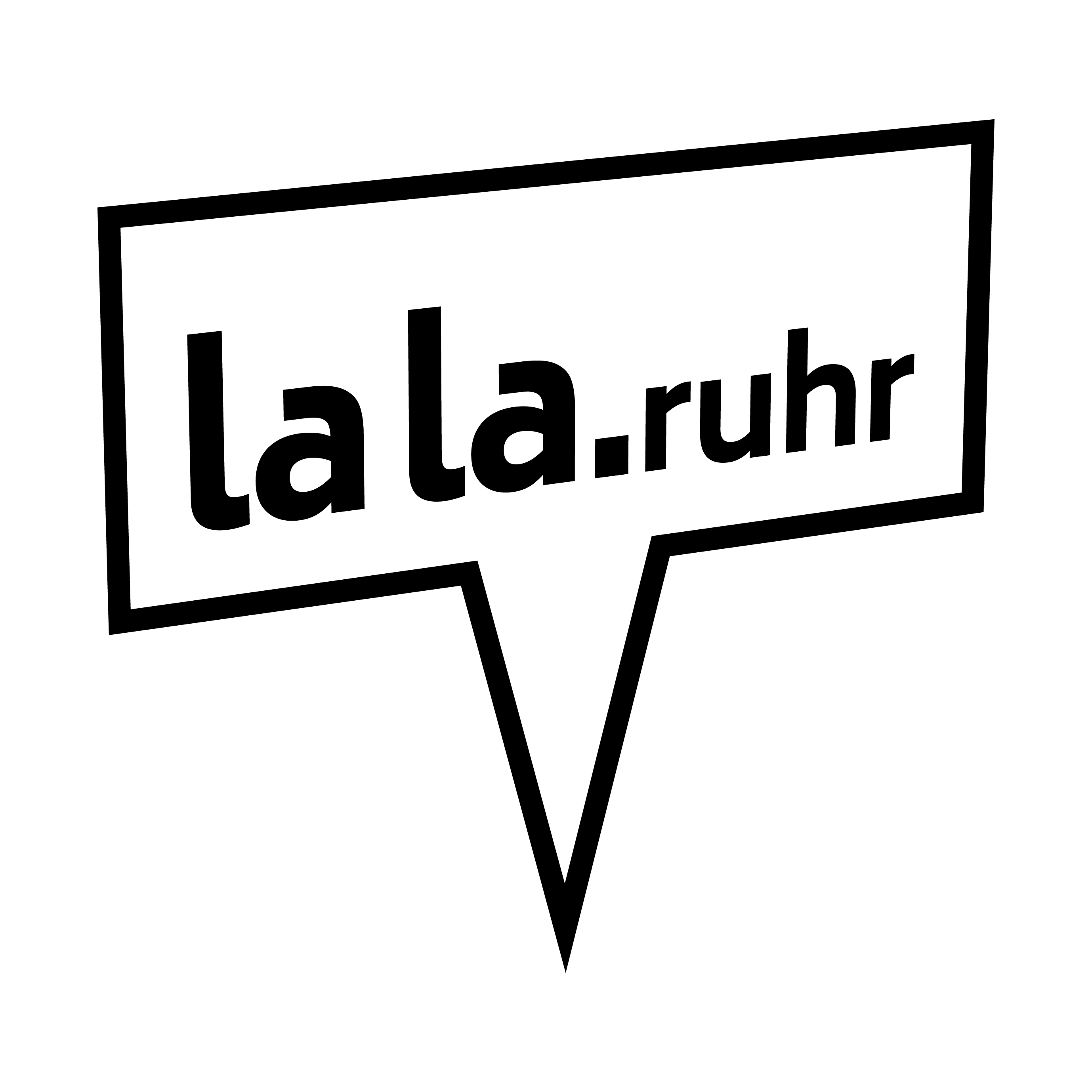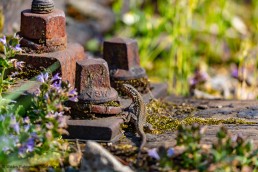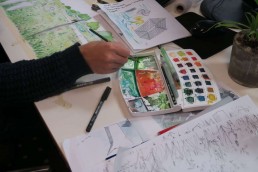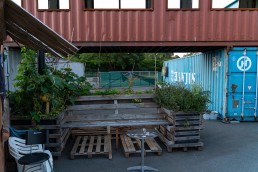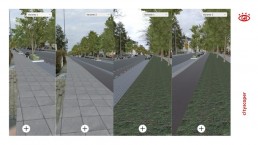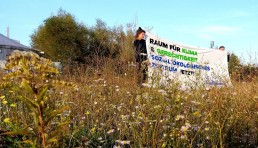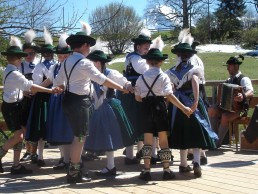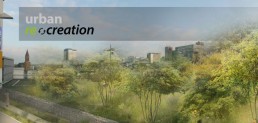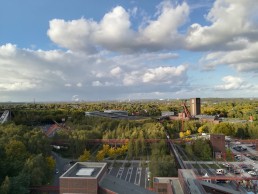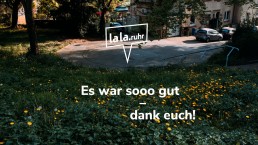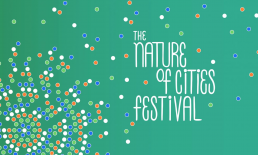Project "Wild Ruhr Area" introduces itself
moments
of
urban nature
The project “Wild Ruhr Area” introduces itself
At first glance, the Ruhr area does not seem to be the ideal working environment for nature photographers. Nevertheless, or perhaps precisely because of this, a number of nature photographers who grew up in the Ruhr or now live here have joined forces in the “Wild Ruhr” photo project. Together, they want to show with their photographs that there are indeed natural spaces and all kinds of beautiful things to discover in the Ruhr region. Of course, there is a lack of large-scale wilderness, which is now hard to find anywhere on the globe. But between the shopping centre, heavy industry, traffic routes and the ubiquitous “Ruhrpöttler” (a person who lives in the Ruhr area), there are small areas everywhere where many a herb and even more animals feel at home.
Wildes Ruhrgebiet wants to show these, make them visible and thus speak out for them. This also means drawing attention to the habitats that nature needs and that are actually there.
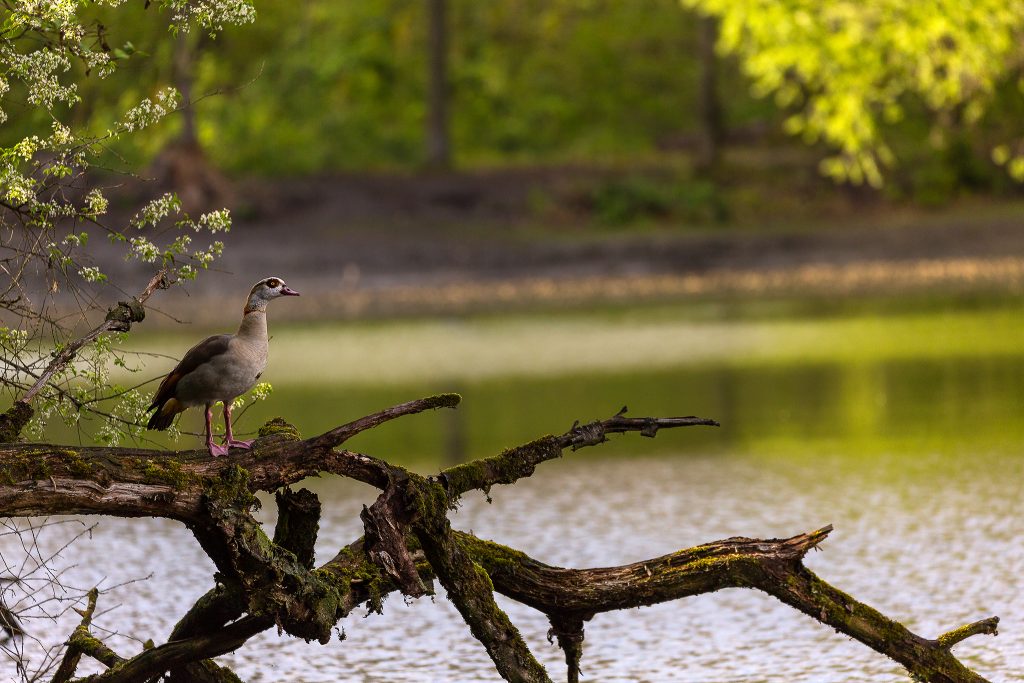
For example, there are very natural forests and even meandering streams like the Rotbach, which flows from Bottrop via Oberhausen to Dinslaken into the Rhine. Such a body of water has become rare throughout northern Germany.
Herons and kingfishers hunt in the floodplain forest remnants of the Ruhr, and we encounter hare and deer on the farmland and meadows bordering the Ruhr everywhere. Almost like everywhere else in Germany, too, if it weren’t for the rooftops of houses and the chimneys and pits in the background.
But there is also life in the shadows of industrial plants and their ruins, along railway tracks, in our immediate neighbourhood on the balcony and in the garden. These smaller habitats need to be portrayed more often, as such areas are usually not perceived as biotopes at all. Yet it is precisely our brownfield sites that represent a type of landscape and habitat that exists almost exclusively in the Ruhr area and that represents a last refuge for many special species, since their actual, original homes have long since disappeared. Without brownfields, we lose these species completely, but also the typical character face of the Ruhr region. And with it a piece of what makes us special here.
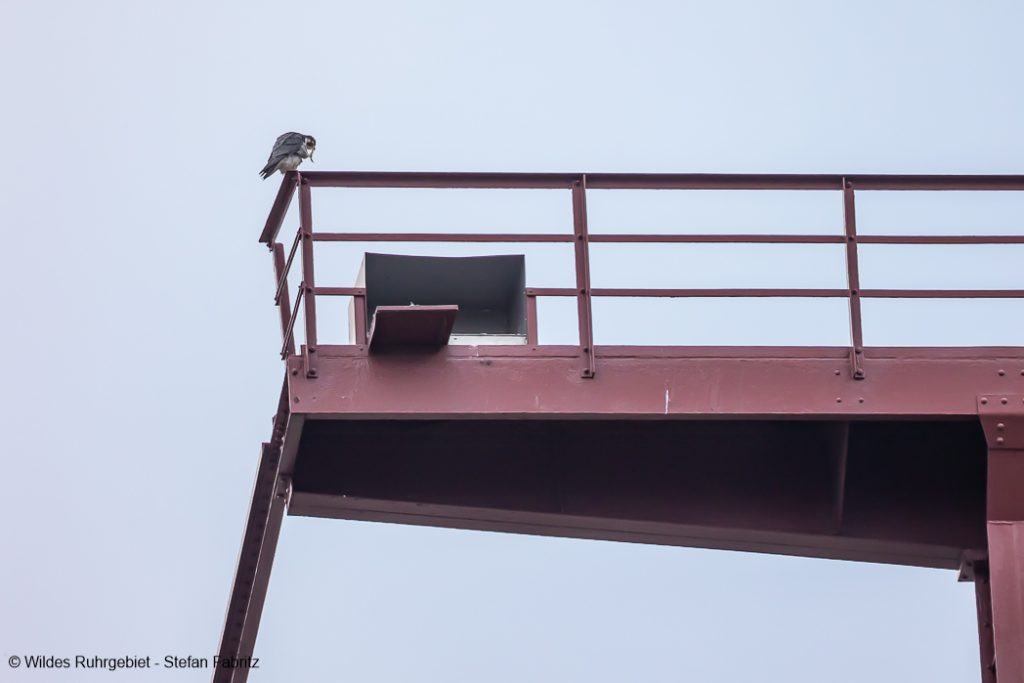 If you want to discover the Ruhr for yourself, there are many places to do so. In the far west are the Rhine meadows in Walsum, where you can take a look at a stork’s nest. From the many footpaths along the waterways, you can also observe various water birds. A particularly atmospheric morning can also be experienced on the Ruhr in the south of Bochum or near Witten, when the fog lies in the Ruhr valley in spring or autumn.
If you want to discover the Ruhr for yourself, there are many places to do so. In the far west are the Rhine meadows in Walsum, where you can take a look at a stork’s nest. From the many footpaths along the waterways, you can also observe various water birds. A particularly atmospheric morning can also be experienced on the Ruhr in the south of Bochum or near Witten, when the fog lies in the Ruhr valley in spring or autumn.
But there is also nature to discover in the midst of industrial culture. High up on the winding tower of the former Nordstern colliery, for example, the peregrine falcon nests at a dizzying height. And in La Pa Du (Duisburg North Landscape Park), numerous wall lizards can be found on the railway tracks and embankments as well as on the buildings. At the right time of year, you can hear the concert of the natterjack toads, which are at home here as well as on other derelict industrial sites in tiny bodies of water. With patience and careful behaviour, the animals can not only be observed but also excellently photographed. In addition, it shows very beautifully how various wild plants make even the smallest niches their habitat.
Good photo opportunities can be found wherever the animals are used to humans and therefore show little shyness. For example, at the numerous park waters, parks and local recreation areas as well as the renaturalised tailings piles common to our region. Examples include the Abtsküche in Heiligenhaus, the Phönixsee in Dortmund, the Stadtteich in Bottrop and the Ruhraue in Essen-Heisingen. The best photographic results are achieved with telephoto focal lengths from 200 mm. But because of the familiarity of the animals with the visitors, it is also possible to take pictures with a smartphone.
In any case, we wish all those interested a lot of fun discovering nature on their doorstep!
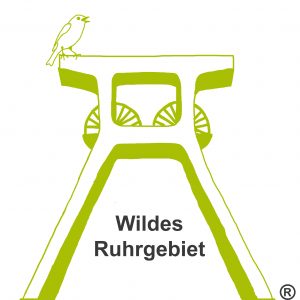
Article: Stefan Fabritz (Wildes Ruhrgebiet)
Pictures: Sabine Fabritz, Stefan Fabritz
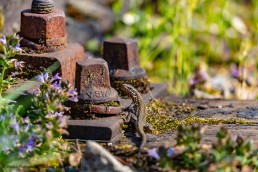
Between the shopping centre, heavy industry and traffic routes there are small areas everywhere where many a herb and even more animals feel at home.
Shaping space is linked to major issues for the future
shaping space is
linked to major issues
of the future
Pleading for a strong landscape architecture
Few professions are as influential on space as landscape architecture. As soon as we move outside, we are already in the midst of the work of landscape architects – whether in the park, on the playground or schoolyard, on the bike path or on the marketplace in our own neighborhood. Nevertheless, only a few people can really classify the profession, sometimes it is even considered an “exotic niche”. Landscape architects who talk about their work with friends and acquaintances after work are sometimes asked why they need a degree to “put up a piece of playground equipment or a bench”.
Why is that?
On the one hand, it’s because many clients think they can take over our work right away or delegate it to people outside the field: “We’ll just do the outdoor area quickly”. Or they take over the open spaces and pour concrete. The remaining square meters can then basically only be described as residual areas – the origin of bulky terms such as clearance green and verges. And you don’t need experts for that, do you?
Yet the field of landscape architecture is growing steadily, and is becoming ever larger and more urgent, not least due to advancing climate change. Well-designed, sufficiently dimensioned and functioning urban landscapes satisfy elementary needs – the pandemic has just shown us all how valuable green open spaces are.
The requirements for multifunctional urban landscapes are becoming increasingly diverse and comprehensive:
- As a space for people, they should enable encounters (open space is always also social space) as well as serve movement and thus health.
- From a climatic perspective, the focus is on mitigating climate change (rainwater management, preservation of cold air corridors, local absorption and storage of rainwater in cities based on the sponge city model, etc.).
- Enabling mobility for all (mobility turnaround, cycle lanes, transformed road spaces, etc.)
- Preserving space for animals and plants (promoting biodiversity, urban habitat…)
The profession of landscape architect has expanded enormously over the past twenty years and is currently linked to many issues of the future. Landscape architecture as an integrating discipline faces up to these tasks, brings experts together and often finds forward-looking solutions for challenging issues – and this despite the fact that the discipline continues to operate only in the background in the public perception. As a design discipline, landscape architecture is also interested in aesthetic and at the same time technical solutions – how many professional fields are based on such a challenging balancing act?
Model solutions for many of the new challenges arising from the pandemic and climatic changes do not yet exist. Accordingly, a great deal of courage will be needed in the coming years – on the part of planners as well as municipalities and clients – to try out model solutions and set new landscape standards and break down outdated notions of roadside greenery.
We need a collaborative professional practice to develop solutions that move us forward. And, most importantly, we need more young people to choose this wonderful and little-known profession – it sometimes doesn’t even appear in career counseling databases for high school students – because it is exciting and offers so many challenges.
As a partner in a planning office, I am also concerned about the educational situation in the Ruhr region in particular: a huge, transformative metropolitan area without a single landscape architecture degree program. This is a wasted opportunity for the region, as it is students in particular who develop fresh ideas for their surroundings – beyond the familiar solutions.
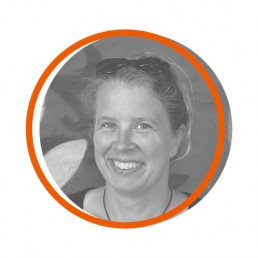
Isabella de Medici hat Landschafts- und Freiraumplanung in Hannover und Barcelona studiert und lebt seit über 20 Jahren im Ruhrgebiet. Seit 2017 ist sie Gesellschafterin bei der Planungsbüro DTP Landschaftsarchitekten GmbH, hat einen Lehrauftrag bei der FH in Dortmund, ist Sprecherin für Freiraum beim bdla nrw und Teil des Teams von lala.ruhr.
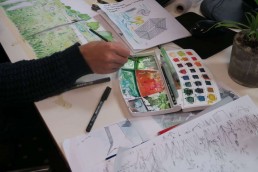
lala.ruhr ist das Labor für die Landschaft der Metropole Ruhr – eine Biennale der urbanen Landschaft!
In conversation with Daniel Bartel from SEND NRW
"social entrepreneurs
need other
framework conditions"
lala.ruhr in conversation with Daniel Bartel from SEND NRW
How does SEND define social entrepreneurship?
Social entrepreneurs are people who use their creativity, their willingness to take risks and their entrepreneurial spirit to develop and disseminate innovative approaches to overcoming social problems. The primary goal of social entrepreneurship is thus to solve societal challenges. This is achieved through the continuous use of entrepreneurial means and results in new and innovative solutions. The social or ecological added value is always in the foreground, profits are seen as a means to an end, and social goals are lived out internally and externally. The work is therefore aimed at impact, not primarily at profit. This is ensured by a controlling and regulating dimension.
While the social entrepreneurship sector is strong in many countries, above all in Great Britain, Germany scores relatively poorly when looking at the data from the Atlas of Social Innovation. Why is that?
Mainly because in Germany there is a very strong distinction and separation between the common good, non-profit and profit orientation. Entrepreneurship is accordingly associated per se with a capitalist profit motive, not with a social-innovative impact. A good example in this regard is Viva con aqua, an international network founded in Hamburg that campaigns for safe access to clean drinking water and basic sanitation. The company makes revenue and uses it for social purposes – according to the German guidelines it is difficult to define whether this is a public good or profit orientation.
According to SEND, social entrepreneurship is still in its infancy, especially in North Rhine-Westphalia and thus also in the Ruhr region. Why?
The problem described above applies here: In North Rhine-Westphalia, politicians do not yet recognise that social entrepreneurs need different framework conditions and pursue different goals than traditional companies. While entrepreneurs are primarily oriented towards making profits and using them to create more jobs, social entrepreneurs have set themselves the goal of working in an impact-oriented way and thus making themselves obsolete as soon as the problem is solved. Because profits and the common good have so far been considered separately, there is still a lack of support and funding programmes for budding social entrepreneurs in NRW. Other federal states, such as Hesse, are already a step further. Here, there is the funding programme Sozialinnovator (Social Innovator), which offers advice and financial resources for entrepreneurs without a capitalist profit-making intention. Only in some municipalities, for example Dortmund, are there positive exceptions with the Start Grow programme. The Impact Hub in Essen also promotes social innovation. But basically the infrastructure is still missing, so to speak. Structural investments on the part of politics are urgently needed here, because a profit-oriented market will be reluctant to provide them.
What else would be needed, besides counselling and start-up funding for founders?
Adapted federal and state procedures. For example, official purchasing of materials and services usually takes place according to the criterion of the cheapest price. Social criteria are not taken into account or are only given second place. However, these could lead to more frequent use of social entrepreneurs.
This is an exciting aspect, and it is worth taking another look at Great Britain. Under the approach of “community wealth building”, such aspects are increasingly being considered by more cities, including Preston as a pioneer. Community wealth building is about creating a resilient and inclusive economy for the benefit of the local area. For its part, Greater Liverpool has over 80 social enterprises with an explicit socio-spatial approach. These range from a launderette as a community hub to a cooperatively organised bakery to The Womens Organisation, a social enterprise that, among other things, promotes and supports the professional path of women as entrepreneurs through workshops and coaching.
Yes, that’s exactly the kind of approach we need here too! Authorities in particular can control their budgets. The municipal district of Höxter, for example, is currently working on a balance sheet for the common good. Currently, there is even a petition to make it possible for public institutions to balance their budgets according to the common good. Furthermore, these examples also show a structural dimension. What rules should the Ruhr region follow in future? Should profit continue to be the only priority? Or do we ensure that public welfare-oriented entrepreneurship and public welfare innovation are actively promoted – by imposing appropriate conditions on the awarding and approval of contracts. All the way to an exaggerated vision: Will only laundromats with a socio-spatial approach be allowed to open in the future?
Should the public sector dare to cooperate and collaborate more?
Absolutely. Open Social Innovation is the keyword here. A good example of this has just started at the federal level with the Update Germany Hackathon. The clear advantage is that public authorities act very slowly, while entrepreneurs act quickly and pragmatically. However, it is important that the institution sees itself as a neutral, effectiveness-oriented platform, approaches potential partners such as the Impact Hub Ruhr, and formulates clear rules. For example: The profits must remain in the Ruhr region and the local structures.
lala.ruhr focuses on green infrastructure and cooperative landscape development. A topic for social entrepreneurs?
Definitely! Especially in forestry, social start-ups are playing a big role at the moment. Actively planting and redesigning – there are many conceivable models that combine modern means and technologies with challenges such as the greening of our cities.
Finally, let’s look beyond the Ruhr region: which national and international examples should we keep an eye on?
The EU-funded programme BRESE (Border Regions in Europe for Social Entrepreneurship) and Las Vegas as a city where the increasing number of casinos has structurally destroyed a lot. Social entrepreneurs are now starting to rebuild the city.
And another personal question: Why are you a social entrepreneur?
Because I am passionate about it and believe that we have an enormous amount of potential in our society to solve problems in ecological and economic harmony. Liveable, regenerative and with respect for all future ways of life.
Thank you very much for the interview!
Interview: Sonja Broy
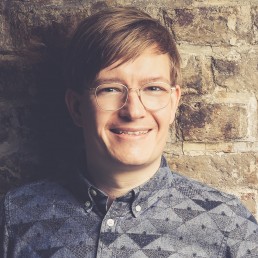
Daniel Bartel is a bridge builder between reality and a future oriented towards the common good, social innovator and NewWork pioneer make it – a network of 100 founders that has already inspired over 1,000 (social) start-up teams of established companies worldwide. Daniel has published three books, is a changemaker dealing with the essential questions of responsible business models in a digitalised society and is the organiser of Unfuck Düsseldorf. He was recently voted one of the “Top 40 under 40 – Macherinnen und Macher im Rheinland”.
Workshop report: creative use of brownfields - blueprints for space pioneers
Workshop report:
creative use of brownfields -
blueprints for
space pioneers
The appropriation of space by creative pioneers – how is that possible, how does it work in the Ruhr region? Svenja Noltemeyer (Büro für Möglichkeitsräume, Urbanisten e.V.), David Coerdt (Pandora2.0) and Frank Münter (Transition Town Essen), three activists who have been taking responsibility for brownfields and promoting a do-it-yourself mentality in urban development for many years, discussed this in the context of the lala.ruhr-festival.
The starting point of the debate: the project idea “land for free”, launched almost 20 years ago in the Ruhr area but never implemented, which was supposed to enable experimental, creative-entrepreneurial projects to revitalise brownfields in the then still shrinking Ruhr area. Outside of building regulations and restrictions, intermediate sites were to be made available to space pioneers with innovative ideas in order to achieve social and economic effects. An idea that never officially came to fruition – and is now being implemented in a do-it-yourself manner in various places in the Ruhr region.
Change through culture, culture through change
Spatial planner Svenja carries on the core of the idea and creates frameworks for the implementation of ideas with her Büro für Möglichkeitsräume and the Dortmund Urbanists. Through networking, cooperation and support with funding applications, people in the city should be enabled to actively shape their environment.
“Cities worth living in are made by local people. But it is very difficult to get through the jungle of authorities alone. In order to continue the strategy of the European Capital of Culture RUHR.2010 ‘change through culture, culture through change’, the city of possibilities and creativity, better structures are needed in the Ruhr region. It must be made easy for people to get involved in their city.” (Svenja)
The self-growing city as a DIY proposition
David, who has rented an area for Pandora 2.0, has been working in the north of Dortmund for some time now, where a “self-growing city” is to be created from sea containers under the aspects of upcycling and climate neutrality. Thus, disused festival decorations and recycled building materials will be used to design the communal areas, which will be transported by bicycle trailer.
“Pandora2.0 is a place where everyone can develop freely. A place for culture, exchange and encounters that can grow according to people’s needs. Not a party space, but a networking place for developing and advancing common ideas and projects, where free spirits meet.” (David)
Pandora2.0 is supposed to develop further on the rented former commercial site through the constant docking of further containers – not an easy undertaking in view of the legal situation in Germany. At the moment, David is working as a private person to create legal certainty in terms of a fixed, commercial use and a concession for events, which should bring financial security.
Doers and enablers
Frank comes from the “community garden corner” and, together with his fellow campaigners in Essen-Altenessen, has joined the worldwide Transition Town movement, which wants to encourage as many people as possible to act and manage differently in their environment. In Altenessen, he and his team are transforming derelict, littered plots of land into green gems using mobile garden elements such as raised beds.
“We help with knowledge, heart and hammer and as a Transition Town we want to upgrade our neighbourhoods, fill dreary, loveless, neglected places with positive life again.” (Frank)
Transition Town cooperates with the city of Essen. “We are very well supported,” says Frank. Because the city administration sees the advantages: Areas that are designed by Transition Town for a few years no longer have to be maintained by the city. Transition Town has a corresponding agreement in the administration and is offered abandoned playgrounds, for example.
The activists of Pandora2.0, on the other hand, have had different experiences in dealing with the administration and politics. David remembers: “Originally, the idea came up in Lünen, where we presented a real concept, on a slag heap, with a composting toilet and container. We were laughed at, with the motto “let the kids do it.” The idea was on ice for seven years before David started talks again in 2018 after moving to Dortmund, and got started in February 2019 with a few fellow campaigners. “The Kliemannsland project in Lower Saxony gave me the courage to take up my idea again and put it into practice. For two years I could see on YouTube that a similar concept works and is accepted.” At the moment, he is increasingly trying to get in touch with the Emschergenossenschaft and – analogous to the Transition Town concept – to occupy areas in the future that he no longer wants to manage and maintain in order to initiate community gardens with raised beds there, for example.
But can interim use, as is the case with both Transition Town and Pandora2.0, really be sustainable? After all, pioneers invest a lot of time and resources in areas that may be built on and used for other purposes by investors or the city after a few years. The answer is clear: yes, it is always better than remaining in a state of inactivity. In addition, both initiatives rely on mobile elements that can be easily rebuilt on new sites, so that new spaces of experience can quickly be created there.
Helping to shape the city of the future
The final wishes of the three pioneers for the creation of more enabling spaces and culture can be summarised as follows:
- Administrations should be willing to give derelict spaces to appropriate networks for (temporary) use – a win-win situation, as maintenance by the municipality is no longer necessary and space pioneers can test their ideas at the same time.
- People who want to help shape their city should be able to easily contact a network of space pioneers in order to get a low-threshold introduction to participation.
- It should be possible to receive an initial investment so that actors do not have to finance their voluntary community work out of their private pockets – an amount like 1,000 euros can already make a big difference.
- Funding should work without an advance on expenses, so as not to have to take personal risk for the group involved.
- Funding consultations are needed to know which ideas are eligible for which funds and how to make it possible for initiatives without their own legal form to apply.
If you missed the festival talk, which also included a discussion on the experience of vandalism in creative use of brownfields, you can watch the recording on the Pandora2.0 twitch channel:
www.twitch.tv/PandoraZweiPunktNull
Text: Sonja Broy
Picture: Pandora2.0
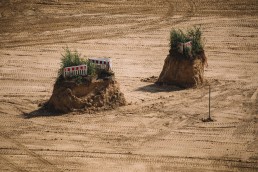
The appropriation of space by creative pioneers – how is that possible, how does it work in the Ruhr region?
Workshop report: Green ways, green spaces - new infrastructures for liveable cities
workshop report:
green ways, green spaces -
new infrastructures for liveable
cities
We need fewer parking spaces and more cycling in our cities – many city dwellers, initiatives and planners agree on this. But if parking spaces are to disappear, all planning projects regularly end up in bitter debates. The main question of the festival workshop with Robin Römer (cityscaper) and Jan van den Hurk (Radentscheid Aachen) was therefore: How do we bring bicycle-friendly infrastructure onto the streets and communicate the reallocation and upgrading of street space?
Above all, through communication that makes the added value of the redesign comprehensible to everyone – and for that, good arguments are needed. The participants were each assigned a role for small group discussions in digital break-out rooms. It was exciting to see how participating administrative staff discussed in the role of citizens, detached from their professional position, and how citizens represented the view of politics. The results were compiled on a digital whiteboard, on which arguments and counter-arguments quickly formed a colourful mosaic of speech and counter-speech. Here are a few excerpts from the discussion:
- Nobody rides a bike anyway!
Where there is no offer, there are no users.
Before a bridge is built, nobody counts how many people swim through the river. - Trees are very cost-intensive, need water and care, and produce leaves and pollen.
Urban climate and environmental protection may cost money.
Climate change adaptation through greening and less asphalted surfaces offers protection against heavy rain and alleviates heat waves. - Everyone drives a car anyway!
More roads also lead to more car traffic, more parking spaces to more cars.
The current focus on cars is unfair because people who don’t have/can’t afford a car are disadvantaged.
Car infrastructure is more expensive than bike infrastructure (less sealed surfaces, less maintenance costs), therefore paradigm shift.
In a second round, different cross-section variants of a street were discussed on the basis of a concrete case, with the additional inclusion of 3D illustrations. The role play showed that in both public and political perception, the variant that offers the most parking space is usually preferred. But also that through the 3D illustrations of an avenue, the added value of a green street is understood in the first place and consequently judgements are no longer made on the basis of mere facts, for example with regard to the number of parking spaces and trees.
Text: Sonja Broy
Illustration: cityscaper
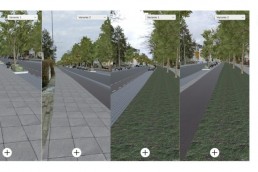
Through the 3D illustrations of an avenue, the added value of a green street is understood in the first place.
Workshop report: a social-ecological centre as a laboratory for a green (urban) landscape
Workshop report:
a social-ecological centre
as a laboratory for a green
(urban) landscape
At the interface between the question of social justice and a reaction to the climate crisis, the idea of a social-ecological centre (sozial-ökologisches Zentrum, SÖZ) for Dortmund emerged. Mila Ellee and Florian Heinkel reported on the founding circumstances of the still young initiative in the workshop they led during the Festival of Landscape: The SÖZ emerged as an idea for the local elections in autumn 2020, from the merger of various initiatives in Dortmund, e.g. the Harbour Initiative, the Fridays for Future Movement Dortmund and the collective “Dortmund von Unten”. It is based on demands for an “Independent Centre Dortmund” – an idea that first emerged in the noughties.
In fact, independently of the activities of the initiatives, the city council of Dortmund had already decided to support an SÖZ in Dortmund with space offers after a proposal by the CDU and the Greens. The SÖZ should address the pressing ecological and social issues of our time, provide space for discourse, but also offer the opportunity to actively and energetically help shape the future of the city and the surrounding neighbourhood with small-scale experiments.
Unfortunately, it has not yet been possible to find a suitable property. Some requirements have already been determined, for example, there is a great desire for the possibility of hosting non-commercial music events; in addition, meeting possibilities are to be created in order to provide the active people with a basis for their community-oriented work.
The second half of the workshop was dedicated to the development of ideas and requirements for use. By means of a Miro board, space utilisations for the still fictitious property were collected together. Among other things, the participants expressed the desire for rehearsal and work spaces, as well as the need for non-commercial flea and barter markets. It seemed important to all that the SÖZ should have a kitchen where people could cook together. The outdoor area was given special weight in the discussion. As an ecological project, the SÖZ should definitely have a community garden – also to get in better contact with people from the neighbourhood. This is the only way to realise the desire to be embedded in the neighbourhood.
At the moment, the initiative is still in the founding phase. The core group of about 20 people meets regularly (currently digitally) and is always open to people who want to get involved in the development of the SÖZ. The SÖZ should be easily accessible by public transport in Dortmund – space ideas and suggestions are also very welcome!
Contact via soez-do@riseup.net / Instagram: soez.dortmund / Twitter: @soez_dortmund
Text: Jan Bunse/Mila Ellee
Picture: Initiativkreis SÖZ
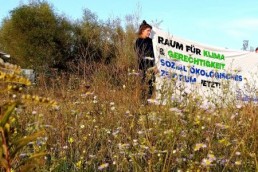
At the interface between the question of social justice and a reaction to the climate crisis, the idea of a social-ecological centre (sozial-ökologisches Zentrum, SÖZ) for Dortmund emerged.
Workshop report: How do we want to deal with the landscape in the Ruhr region?
Workshop report:
How do we want to deal
with the landscape in the
Ruhr region?
The landscape in the Ruhr region is heterogeneous. It is characterised by industrial wastelands, the juxtaposition of city and countryside, small green oases in urban spaces. Just as diverse as the five million human inhabitants who benefit from the landscape. An important question that we as the lala.ruhr team want to address is how we deal with this special landscape in the Ruhr region. At the Festival of Landscape, we discussed this very question with Frank Bothmann from the Department of Landscape Development and Environment of the Ruhr Regional Association and Dr. Ilka Mecklenbrauck from the Faculty of Spatial Planning at TU Dortmund University. Jan Bunse, a spatial planner from Urbanisten, led the discussion.
It is clear that specifications and measures are needed to protect the landscape from encroachment and to preserve its value. At the moment, compensation and replacement measures for interventions in nature are primarily determined with the help of concrete balancing and eco-accounts. Depending on the intervention, these C+R measures must be of a certain quality and are credited with eco-points to the eco-accounts of private and public land owners. This very calculative approach to the landscape leads, on the one hand, to a “standardised landscape” and, on the other hand, to an actual business with the landscape that is determined by developers and landowners.
On the other hand, we are confronted with a shortage of land, which is not only noticeable in the inner cities, but also in the rural areas of the Ruhr region – highly emotionalised debates and ever greater pressure on open spaces are often the result. Farmers in particular are often faced with the problem of a double loss of land: agricultural land is affected by settlement expansion and is built on in the process. These developments are in turn subject to compensation, and arable land is used for the necessary compensatory measures. Since the ecological improvement potential on agricultural land is very large, the developers receive a lot of eco-points on their eco-account for compensation on such land.
“The field is crying out for new ideas.”
In the discussion and through the contributions of the workshop participants, it is obvious against the background of the status quo in dealing with the landscape that planners, landowners and developers must rethink and that politics must enable innovative solutions. Frank Bothmann put it in a nutshell: “The field is crying out for new ideas.
How exactly these solutions and, above all, far-reaching changes in the way we deal with landscape can be realised is still an open question. For this, legislative changes at the federal level are necessary, which are usually preceded by a long process. Nevertheless, there are already ideas and proposals from planners, researchers and practitioners.
These include, for example, the integration of landscape into urban space, the further development of the economic valuation of nature and the focus on ecosystem services, temporary and flexible structures for open spaces, the productive management of landscape or the understanding of landscape as a cultural and integration space. As attractive as such ideas sound at first, it is important in the discussion to also consider the pitfalls. In this context, Ilka Mecklenbrauck argues that potential conflicts of use should be considered from the outset in the planning process and that the landscape should not be overburdened with the desired multifunctionality of areas. A particularly interesting concept – in our eyes – is the democratisation of the landscape. For unlike settlements, landscape planning is currently not preceded by a democratic process and the space outside settlement areas is viewed in a very functional way. Among other things, this approach can lead to frustration among activists who feel that they are not perceived and taken seriously, and from whose point of view climate and nature protection are strongly neglected. Other approaches to solving the problem include more education in building culture for children and young people, but also optimising teaching at colleges and universities and thinking integratively about architecture, ecology and climate.
In order to bring these ideas and new approaches forward, lobbying is needed in the coming years, above all, to anchor the treatment of landscape in the political discourse. Starting points for this are, of course, the discussion about climate and nature protection, but also urban transformation and urban-rural relations. In addition, according to Ilka Mecklenbrauck, small steps can be taken before the realisation of the big vision and temporary approaches can show success. An important aspect is also social communication and persuasion via images instead of bans, in order to prevent the emotionalised debate and break up old images.
Text: Annette Bathen
Photo: Ravi Sejk
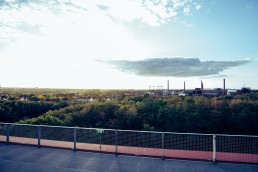
The landscape in the Ruhr region is heterogeneous. How do we want to deal with it?
Workshop report: What now? Wanted: A new narrative for the Ruhr region
workshop report: what now?
Wanted: A new narrative
for the Ruhr region
Admittedly, it was a cheeky attempt: In two days, lala.ruhr wanted to collaboratively develop an overview of the narratives of the Ruhr region. The interim result: 60 people, working together partly simultaneously on a digital pinboard, were able to achieve a structured result. As part of the 1st Festival of Landscape, a map of the Ruhr area narratives was created (To the board on mural.co). The map shows things that people are currently saying about the Ruhr region and – more importantly – suggestions about what should come to mind first when thinking about the Ruhr region in the future.
Very different people have worked on this map: Scientists & activists, marketeers & people from the administration, Ruhris & globetrotters. They have all tried to use simple language, because that is what distinguishes narratives: they are not complicated, but simple. Not cumbersome, but easy. Only in this way is it possible for narratives to spread quickly by being retold, and at some point everyone has the feeling that they have heard it a thousand times before. Even if narratives come across as quite mundane, their power should not be underestimated. These mini-stories create meaning, carry political messages, create identity or convey moral values. And so it is that the term narrative is on everyone’s lips. Whether municipalities, regions or countries, whether politics, science or marketing, everyone is vehemently calling for “new narratives”. Most of the time, this is based on the desire to get rid of old, unpleasant narratives about oneself and to shape new narratives.
But can this succeed at all? Can we really control from above (or below) what a large number of people intuitively believe to be true? Can we invent a story on the drawing board that is so catchy that it spreads by itself and gets stuck in people’s heads?
- The participants of the festival also discussed (in writing and orally) this meta-level of narrative search. I would like to mention three controversial positions from the debate at this point without making any judgements:
- A narrative is more than a snappy advertising slogan, and cannot be forced through even the most elaborate campaigns.
- A narrative must be communicated professionally and have a solid intellectual foundation.
The discussion about narratives is superfluous and misses the real problems of the Ruhr region.
Of course, the search for new (green) narratives for the Ruhr region is not yet finished for lala.ruhr, it is just beginning! In the spirit of the open source idea, everyone is invited to use the map of narratives for themselves and to build on it. We are always happy to exchange ideas. Write to us at narrativ@lala.ruhr
Text: Matthias Krentzek, mxr storytelling, Team lala.ruhr
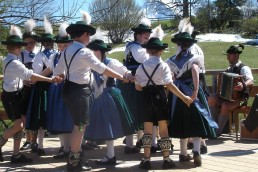
How do you explain to a Bavarian what the Ruhr feels like? What should a Berliner think of when she hears Metropole Ruhr?
Workshop report: Urban Re Creation - new images for inner-city open spaces
workshop report: urban re creation -
new images for inner-city
open spaces
The inner cities of the Ruhr metropolises are still dominated by individual traffic. Here, car after car jostle each other, large traffic axes restrict the possibilities for new forms of mobility and stay. In the immediate vicinity, there are often pedestrian zones that are increasingly failing to live up to their former claim to be attractive shopping areas. Using concepts and best practice examples, Julian Altmann (Essen) and Dirk Becker (Dortmund) addressed this topic and, with the support of the BDLA NRW, discussed new approaches for sustainable inner-city spaces, moderated by Isabella de Medici (Planungsbüro DTP, BDLA).
A play on words was chosen as the title for the urban re-creation event: “re-creation” of inner cities and their qualities. The impulses took this up on three levels: The idea for planning, a concept and already realised projects.
After an impulse lecture by Thomas Dietrich (Chairman of the BDLA NRW) on the topic: “how green is that?” with retrospectives and outlooks on the green infrastructure of the Ruhr area, Andreas Meissner from the project team Emissionsfreie Innenstadt Dortmund (Emission-free inner city Dortmund) presented the project “Dortmunder Wallanlagen” – today a space almost exclusively characterised by the car, for which new images are being developed. This is done, among other things, through various plan cases that work with different traffic routing, including cycle lanes.
A vision of the future for Essen’s inner city was presented on the basis of the master’s thesis by landscape architect Julian Altmann. His thoughts on fresh air supply and rainwater management for the centre ended in a strong image of a significantly greener open space design with reduced road space – the Essen Schützenbahn, which today has eight lanes, could thus be transformed into a park.
“If we always start from the status quo, we go round in circles. Lanes produce traffic, traffic needs lanes. If we have four lanes and build a fifth, it too will be full of cars. Do we then build the sixth or does traffic as a whole need to be rethought?”
Stefan Bendiks presented good practice projects that have already been implemented on the topic of “urban re-creation”. His presentation focused on the implementation and enforcement of designed street spaces. The aspect of participation and involvement of local residents was also addressed. Bendiks formulated the aspects to be considered and taken into account in projects in the form of six tricks that can be read in his book “Traffic Space is Public Space”.
The discussion in the event, which was very well attended by over 60 participants, developed in a lively manner, starting from the core question: Is it not better to think about a spatial design project from the point of view of spatial qualities instead of traffic planning? It became clear that there is still a discrepancy between the planning reality in the offices, where traffic and corresponding counts are all too often taken as the starting point. On the other hand, there is a desire to rethink and reallocate open space so that in the future more people instead of cars will dominate our city centres.
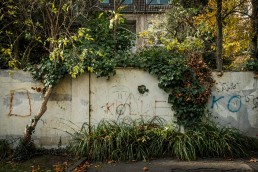
lala.ruhr ist das Labor für die Landschaft der Metropole Ruhr – eine Biennale der urbanen Landschaft!
lala.ruhr in enorm magazine
lala.ruhr in
enorm
magazine
It’s been a week since we celebrated the first digital festival of the landscape together with great presenters, workshop leaders and over 280 participants. The feedback, also from the media, was huge. If you want to read more about the idea behind lala.ruhr and what makes the landscape of the Ruhr so special, you can find an interview (in German) with Sebastian and Melanie about the festival and the special features of the Ruhr in the online edition of enorm: “This is the best place to experience transformation”. enorm sees itself as a business magazine for social change and reports on companies, movements and people.
Picture: Annette Bathen
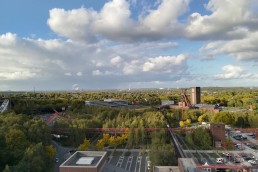
lala.ruhr ist das Labor für die Landschaft der Metropole Ruhr – eine Biennale der urbanen Landschaft!
Workshop report: Kicking around for a good cause - Environmental protection combined with football
Workshop report:
Kicking around for a good cause.
Environmental protection combined
with football
A workshop on football at a festival of the landscape? Where, if not in the Ruhr region! Patrick Schulz from the initiative “bochumbolzt”, which combines the enormous integrative and communicative power of football with the effectiveness of active and local environmental protection, invited us. In practice, this combination currently means that, together with the Bochum Fan Project, football tournaments or sports festivals for pupils are organised on a nearby football pitch or directly on the school playground. During the breaks, bochumbolzt motivates the young football field heroes to clean the playing field and the immediate surroundings from carelessly discarded rubbish.
At the beginning of the first half, feelings and memories about the social space of the football pitch were brought up and possible multifunctional potentials discussed, such as the integration of edible elements around the pitch. Interim result: The football field in the neighbourhood conveys and strengthens the feeling of community – the football field as a spatial anchor, with the aim of creating a waste-free and edible neighbourhood.
“We are currently founding an umbrella association. In the near future, we would like to encourage and inspire people from the cities in the Ruhr region to develop the initial methods and content of bochumbolzt with our support in their city as well and to develop them further together.”
In the second half, the focus was on environmental protection and the global waste crisis, starting with the question of why we should also collect waste locally. This was about an exchange of ideas on a clean neighbourhood and early awareness raising on the production of waste. In the last third of the game, the participants were invited to leave the computer and go out into the fresh air for a short while to see if there is also rubbish on our own doorstep – and to pick it up directly if necessary.
The participants’ conclusion: “It’s very exciting how you combine environmental issues with football! Through football as the connecting language of the Ruhr region, a low-threshold approach to regional environmental protection was found in this workshop and a first, valuable impulse for focusing on the social space of the football pitch was developed.
Text: Patrick Schulz/Jan Bunse
Picture: Lucas Hagen
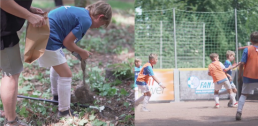
lala.ruhr ist das Labor für die Landschaft der Metropole Ruhr – eine Biennale der urbanen Landschaft!
Workshop report: Participation and responsibility for green stations
Workshop report:
Participation and responsibility
for green stations
Train stations are hubs in the urban fabric. For some, they are a transit point on the way to work or on a trip; for others, they are a meeting place and a place for (late) shopping for groceries, flowers, etc. At the same time, however, a central station in particular can also be seen as a gateway to the city and as a calling card, since its surroundings represent the first impression. This is precisely where the workshop “Participation and Responsibility for Green Stations” came in, looking for ways and methods to motivate residents and travelers alike to actively and sustainably help shape stations and their surroundings.
The vision of workshop leaders Anne Fabritius and Petra Jablonická: to transform train stations and their surroundings into green places with a quality of stay that many people like to visit and that are free from consumerism. As part of kitev (Kultur im Turm e.V.), they have been proving for a long time that this is possible in Oberhausen: The collective organizes concerts and open-air cinema evenings on the museum platform in the middle of Oberhausen’s main station, organizes exhibitions, among other things, in the shop windows of the station and in the museum. The collective organizes concerts and open cinema evenings at the museum station in the middle of Oberhausen’s main station. The collective organizes concerts and open cinema evenings at the museum station in the middle of Oberhausen’s main station, organizes exhibitions in the shop windows around the station, spontaneously sets up a screen printing workshop in public space and will soon open a new place with the working title “Leerstand” (empty space) directly at the main station, between the main entrance and the branch of a fast food chain, which will be opened and operated together with people in tolerated status.
“Lingering vs. loitering: the individual perception of a place, in this case the particular station, also has an impact on the formats and participation tools I can work with. I will have very great difficulty engaging people in co-creative processes if they don’t spend any time at all in that place, or want to leave as soon as possible.”
Based on the fact that train stations often have a negative image, ways and methods to change the situation were sought, building on the experiences in Oberhausen, but also looking at case studies from Basel and Žilina-Záriečie (Slovakia).
The result is a collection of creative approaches, for example:
- Breaking down mindsets: Anyone who uses public transport is a “climate super hero” and should be made aware of it.
- Use the shop windows of vacant lots around the station to share information and encourage participation. Also along the lines of, “You have 5/10/20/30/45 minutes? Here are suggestions for your green stay at the station….”
- Organize/facilitate small actions around the station that don’t take a lot of time and have an identity-building effect (prompt: “Last week, a traveler left a plant in the raised bed across from Central Station. That took 10 minutes and now absorbs Co2 to the tune of X.
- Make participation formats fun. Provide luggage storage and mobile play elements such as a mini-trampoline.
- Establish cross-city network “participation stations” that issues a “station passport” -> one stamp per city/district/action.
Anyone who is now interested to get involved in the station environment of their city is welcome to contact kitev in Oberhausen accordingly. With “Liveable City”, Petra and Anne will soon be launching a new project here, of which train stations and their surroundings are an integral part.
Text: Sonja Broy
Picture: Zuzana Jančeková (KITEV)
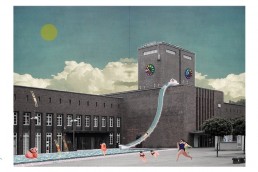
lala.ruhr ist das Labor für die Landschaft der Metropole Ruhr – eine Biennale der urbanen Landschaft!
The Festival of the Landscape 2021
The Festival of the Landscape 2021
Our Festival of Landscape took place in February 2021. We are quite moved by the great interest, the inspiring contributions and the many positive feedbacks.
We have set out to develop stories for the future with the idea of the “Laboratory of Landscape” and to shape our region with it. All actors and participants have contributed a lot to this. We have shared a lot of commitment and enthusiasm, ideas and motivation for the topic. Thank you very much! We had a lot of fun!
On February 26 and 27, about 160 city makers, landscape designers, planners, activists and scientists met online to discuss and shape common visions for nature, landscape and green infrastructure in our region.
Impulse lectures, workshops and a colorful supporting program with music, readings, yoga and more created a festival atmosphere on various online stages. The festival was an innovative building block in the framework of the Offensive Grüne Infrastrukutr of the Regionalverband Ruhrgebiet.
A review of the festival and the documentation of the workshops can be found on our blog.
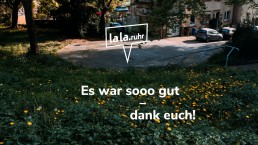
lala.ruhr ist das Labor für die Landschaft der Metropole Ruhr – eine Biennale der urbanen Landschaft!
Discussing the cities of the future together: lala.ruhr and The Nature of Cities Festival cooperate
Discussing the cities
of the future together:
lala.ruhr and The Nature of Cities Festival cooperate
5 days, 12 languages, over 100 programme items covering all regional time zones: The international The Nature Of Cities Festival (TNOC) offers a superlative programme on the theme of “Better Cities for Nature and People”, and in doing so examines the future-oriented aspects of urban development – thus dedicating itself globally to the topics that our Festival of Landscape discusses locally in relation to the Metropole Ruhr.
That’s why TNOC and lala.ruhr are cooperating: the festival starts as early as Monday, 22 February, and runs until Friday, 26 February. Friends of lala.ruhr can register for free! Just send an email to “kontakt@lala.ruhr” and we will send you the registration data!
The wish of the organisers’ team, whose members come from various international non-profit organisations: “Join a diverse international community of urban thinkers to reimagine our cities today and build the cities of tomorrow. Listen to inspiring keynotes and participate in plenary dialogues. Take an excursion and visit Mumbai in the morning and return to Paris by nightfall”. Or even to the Metropole Ruhr – because when TNOC ends next Friday, 26.02, our digital laboratory of the landscape will start!

The Nature Of Cities Festival (TNOC)
register for the festival for the landscape of the metropole ruhr!
Register for the Festival
for the Landscape of
the Metropole Ruhr!
Actually, we wanted to meet you on site, directly in the landscape – to work and think and envision, to go on excursions and to network over the closing beer. But for good reason, as we all know, we are all staying at home at the moment.
No reason to abandon the plan: Curtain up for the first digital laboratory of the Metropole Ruhr landscape: on 26 and 27 February, city makers, landscape designers, planners, activists and scientists will meet online to discuss and create joint visions for nature, landscape and green infrastructure in our region.
The core of the festival is formed by a total of 13 interactive workshops, spread over both festival days. Impulse lectures, workshops and a colourful supporting programme with music, readings, yoga and more create a festival atmosphere on various online stages.
Networking and informal exchange will not be neglected at lala.ruhr either, as we are opening a digital lala.lounge. Just make yourselves comfortable on the couch with coffee, tea, beer or wine and dial in at the times indicated!
Participation in the festival is free of charge. The event will be held in German unless otherwise stated. Places may be limited depending on the programme item.
You will receive the relevant information and links to the workshops and programme points in good time by e-mail after your registration.
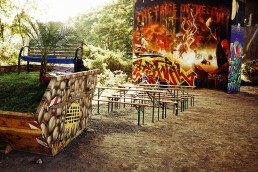
lala.ruhr is the laboratory for the landscape of the Metropole Ruhr – a biennial of the urban landscape!
#thinklandscape
#thinklandscape
The idea of lala.ruhr
Climate change, biodiversity, green infrastructure, urban agriculture, health and quality of life, right on our doorstep? How we shape these issues today will shape our urban landscape of tomorrow. We invite you to a laboratory for this future. A laboratory for a landscape where over 5 million people live and work.
lala.ruhr – The laboratory for the landscape of the Metropole Ruhr
We want to discuss and shape the future – and understand this region as a landscape. Further development, trying out new things and making them tangible are the focus of all lala.ruhr formats.
lala.ruhr consists of many
We are a network of experts for landscape and architecture, urban development and spaces, joint work and participation, communication and collaboration – initiated by Sebastian Schlecht and Melanie Kemner.
lala.ruhr starts at your windowsill. For us, landscape begins at home, on the balcony, in the garden, at the front door and in the crack in the pavement from which green sprouts. Green infrastructure is the network from the windowsill into the city and beyond!
lala.ruhr demands access for all
A diverse landscape and its accessibility are the key to a visible and tangible quality of life. Access to green space should therefore not be a privilege – or, to put it another way: everyone should be privileged. Particularly lively habitats are created wherever humans, animals and plants meet in the landscape and benefit from it.
lala.ruhr has a vision.
Team and network are working on a story for the future of the Ruhr, and on a vision: a laboratory, a platform, a festival. The international biennial for the landscape! a large interdisciplinary format for which lala.ruhr is looking for supporters. Sponsors, cooperating institutions, landscape experts who are keen to experiment and develop their own contributions.
lala.ruhr invites you to participate
We cordially invite you to get involved in the lala.ruhr network. Our vision is the Biennale 2022, but we are already preparing it with pilot formats together with the Regionalverband Ruhr, among others – we will continue on 26 and 27 February 2021, when lala.ruhr invites you to a first “Laboratory of Landscape”. So: See you soon at the Laboratory of Landscape! Think Landscape!

lala.ruhr is the laboratory for the landscape of the Metropole Ruhr – a biennial of the urban landscape!
